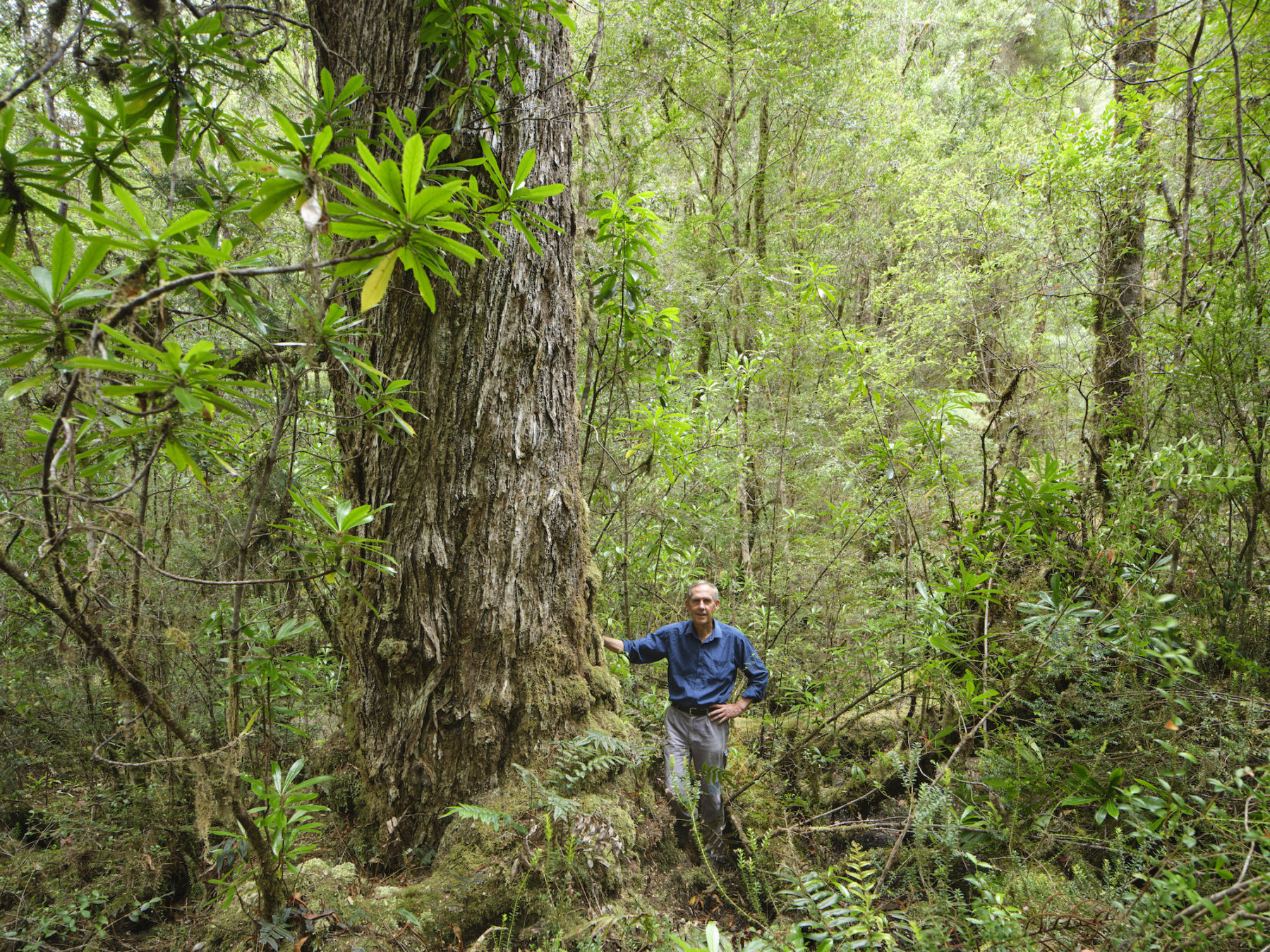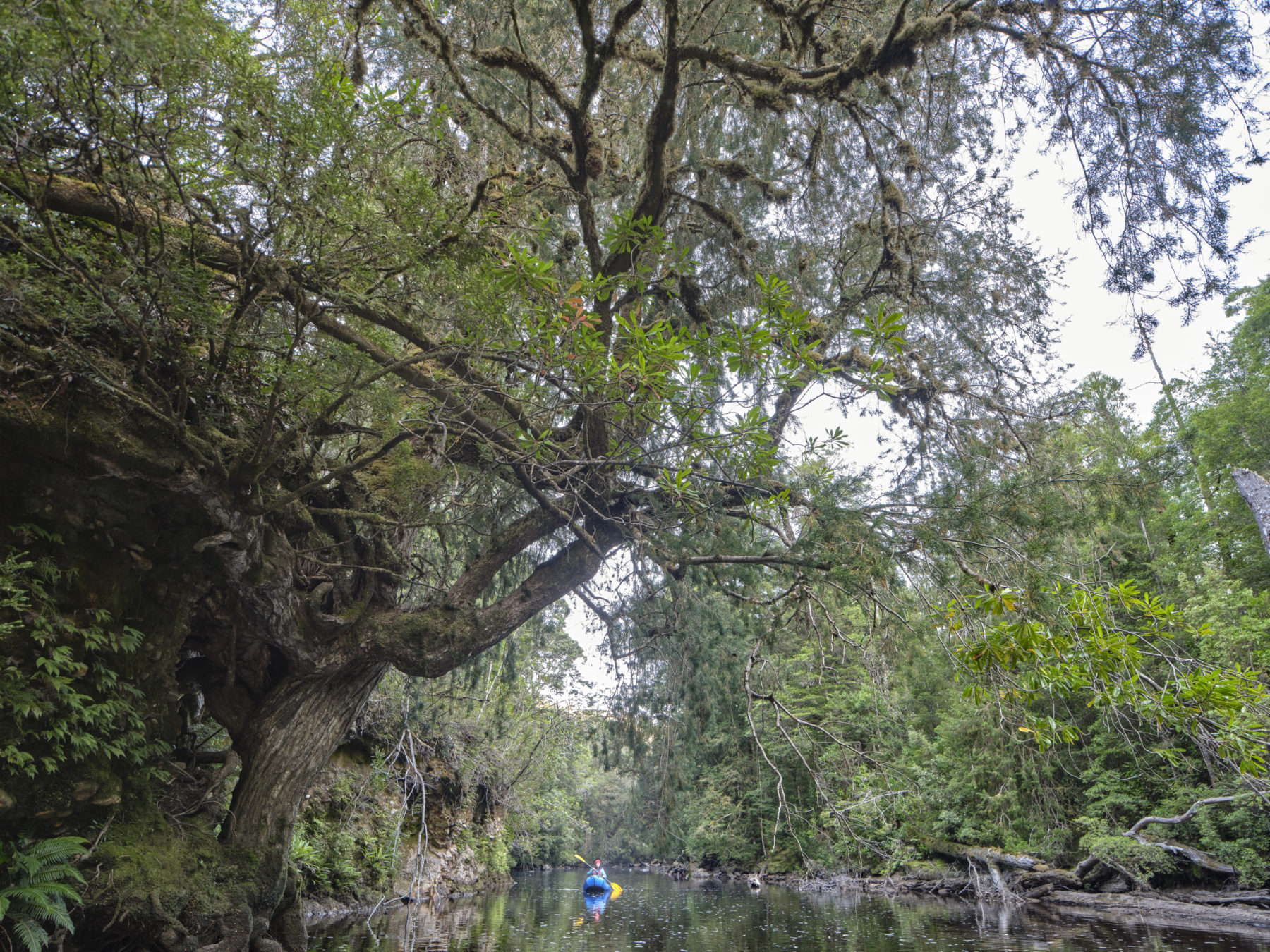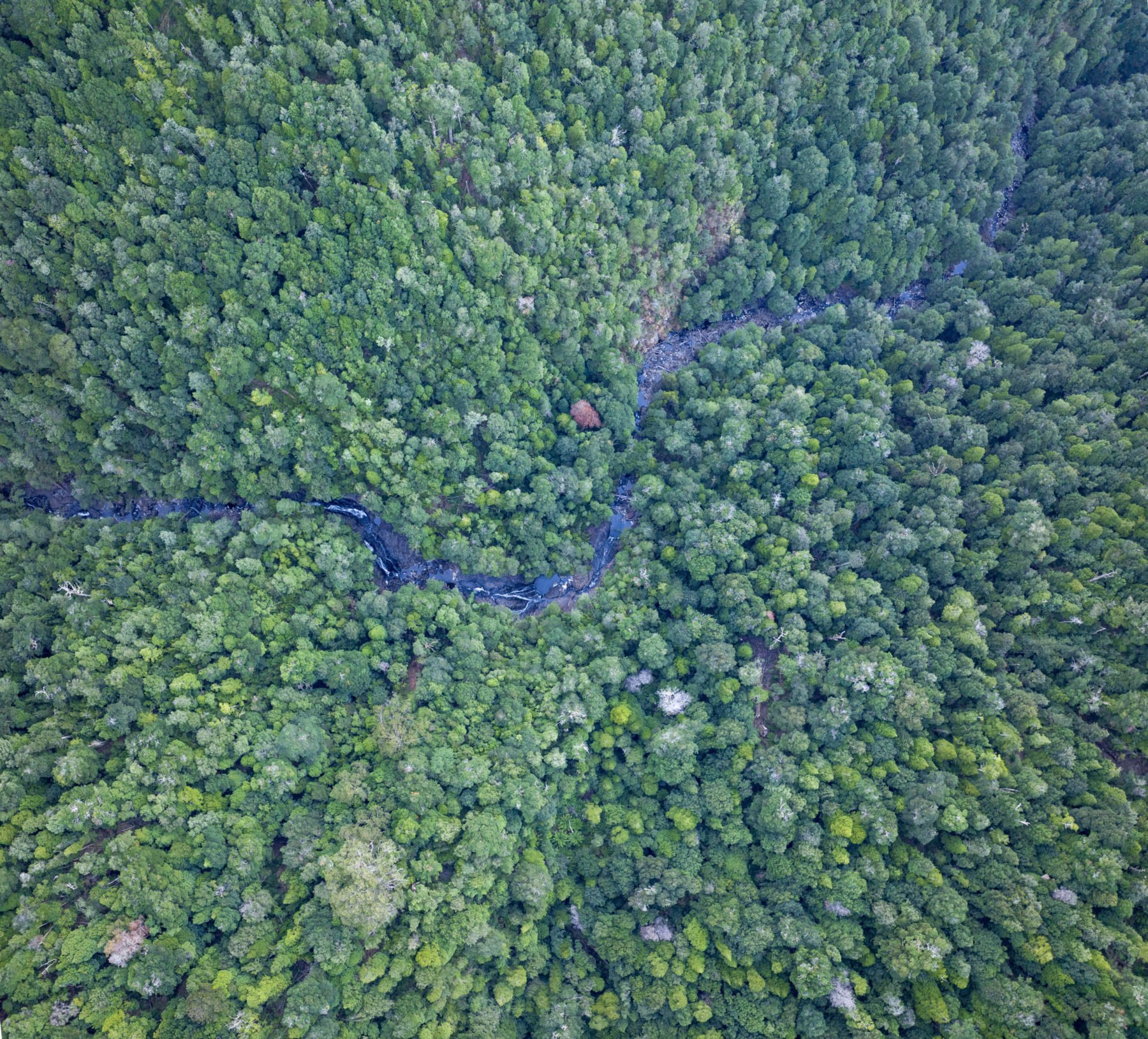Treasure in the trees: ancient stand of Huon pines ‘discovered’

Every once in a while a story reminds us that there are still treasures hidden in the world: Roman ruins are unearthed under a supermarket car park in London; ‘extinct’ Wollemi pines are discovered in Blue Mountains canyons; the skeletons of hobbit-like humans are found in an Indonesian cave. Tasmania has so much wilderness –dense, remote, inaccessible – that it’s not surprising that the latest example comes from here, in the takayna/Tarkine wilderness in the state’s north-west.
In January 2022 veteran conservationist Bob Brown was part of a team of five who rafted down the Wilson River to find a wild river lined with unlogged and undisturbed groves of ancient Huon pines, a rarity when almost every other Huon pine river in Tasmania was logged half a century ago. Bob was astonished. “I thought that all the Huon pine groves had been logged out, so it came as a magnificent surprise to find a valley with its groves intact,” he said. “The tops of these Huon pines stretched up above the rainforest, rising like castles in the morning mist. I thought nothing like that was left on Earth.”

These may well be the world’s oldest and most extensive untouched stands of Huon pines – Australia’s longest living trees, and the planet’s second behind America’s bristle cone pine. They can live for 3000 years, meaning some have been alive since well before Christ, since before Julius Caesar first donned an olive wreath.
Few white people have ever been into this area. Wilderness photographer Rob Blakers knows it best, first bushwalking here 35 years ago, admiring the Huon pines without realising their significance. He has returned half a dozen times since, with this year’s trip having three main purposes: to allow scientists to survey specific groves of Huon pines and establish their significance; to let Rob capture the valley’s beauty, and so Bob Brown could explore this remote part of his beloved Tasmania.
The team of five helicoptered in to spend three days rafting along the catchment, surveying groves of trees along the wild valley. They covered nine kilometres of the river catchment, camping on the riverbank to listen to owls and possums and find Tasmanian-devil scat beside their tents; marvelling at the moss-covered Huon pines leaning out over the river like nowhere else on earth.

Surveys found an extremely high density of ancient trees. In one grove, 18 trees were found with a diameter at breast height of between 0.8 and 1.6m – 800–2000-plus years old – in one line of only 400m.
Huon pines are endemic to Tasmania, only found along certain rivers in Tasmania’s south and west. Their timber is naturally resistant to rot and pests, prized for building boats and furniture. A lucrative industry sprung up around this ‘green gold’ in the early 1800s, with tough, resourceful piners scouring remote rivers, floating rafts of logs downstream. Two further waves of logging followed in the 1930s and 1970s. By the time Huon pine logging was banned in the 1970s, 90 per cent of Tasmania’s (and the world’s) original stands had been impacted.
Huon pines are not real pines – they are in a genus of their own. They grow extremely slowly, adding an average of just one millimetre of girth a year. Rob is fascinated by them, noting that theoretically at least, they may be ‘immortal trees’: they often reproduce vegetatively, with saplings sprouting from fallen trunks, sharing the rootstock of the ‘mother tree’.
Bob is now 77, and moved to Tasmania 40 years ago to look for the thylacine (Tasmanian tiger), soon concluding that it had been deliberately sent to extinction. “After having seen so much of Tasmania’s forest gone, it’s like being given an opportunity to have another go, to not send the last of the Huon pines the way of Lake Pedder and the Tasmanian tiger.”
It’s not only the unparalleled concentration of ancient Huon pines that makes the Wilson River special. Blakers summarises: “This area makes up a significant chunk of the southern portion of Australia’s biggest cool temperate rainforest…The entire takayna/Tarkine deserves to be World Heritage-listed, but instead it faces threats from mining and logging.”

Bigger than the Daintree, takayna/Tarkine has been assessed as worthy of World Heritage listing for both its natural and cultural values but remains largely unprotected. New threats loom: in the same week Bob’s group were rafting down the Wilson, Venture Minerals put in an application for federal environment approval for the Mt Lindsay tin mine in wilderness nearby, one of three mines the company proposes for takayna/Tarkine.
Venture Minerals also holds a mining exploration licence for the Wilson River catchment, with three areas cleared and a drill rig installed around 12 years ago. One of the surveyed Huon pine groves was marked with old transect tape, an early precursor to marking and cutting a grid across the forest before a grid is constructed to test for magnetic anomalies. (The project is still a long way from this destructive stage.) According to Rob, across one tape was scrawled ‘Huon pine habitat’: the company is clearly aware of the trees, if not accepting of their significance.

This is not easy country to explore. After Rob’s seven-day trip through the area in the 1980s, he next returned in 2020 with botanists in tow, helicoptering into the headwaters to raft down the river. Heavy rain arrived a couple of days later and “it got totally terrifying – there’s a big gradient drop and this river was thundering down between death chasms”. The group hiked up on to a parallel ridge to escape, in the process finding an easier route into the river’s lower reaches. (Rob plans to release track notes to allow people to walk into these more accessible groves: still a solid three to six hours each way.)
The Wilson River catchment is true wilderness, with Rob calling it a place of “rainforest, fantastic topography and wild rivers”. He saw evidence of only a handful of cut Huon pines in the entire 28km of Huon-pine clad catchment (encompassing Yellow Creek, and the Wilson and Harman rivers), and suspects the rugged terrain and steepness of the river prevented the trees being decimated as they were across the rest of the state.
So much about Huon pines is still unknown, mysterious. Bob may have been too late for the thylacine, but his Tasmanian explorations have unearthed plenty else deserving of protection. He sees this discovery as an opportunity to study, protect and appreciate these ancient trees: “It’s really up to us, whether we wipe out more species or whether we protect what’s left of our natural bounty.”




